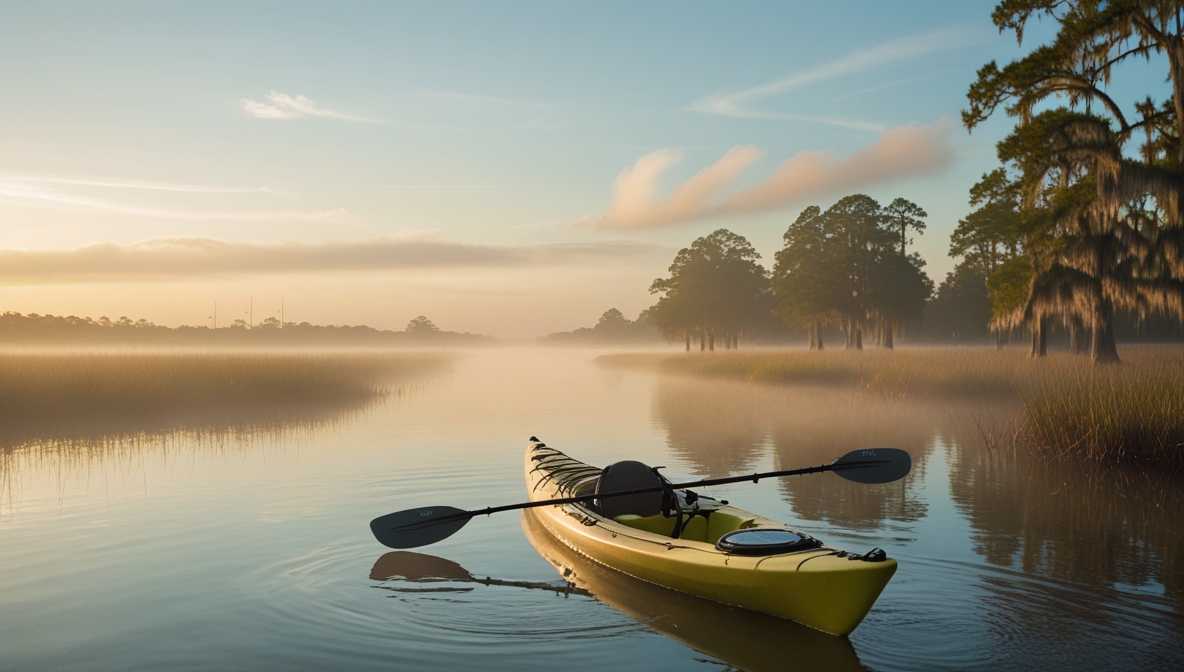
Understanding tidal schedules can significantly improve outdoor activities like kayaking and fishing in the Lowcountry. These waterways are deeply influenced by the ebb and flow of tides, impacting access, fish activity, and the overall experience. By aligning plans with the tides, enthusiasts can ensure safer, more productive outings.
The Role of Tides in Outdoor Activities
Tides influence water levels, currents, and even fish behavior. For kayaking, a rising or high tide allows access to otherwise unreachable creeks and marshes. Fishing during tidal changes—particularly as water begins to move—triggers feeding activity in fish. Observing tide schedules ensures every trip maximizes both accessibility and success. By checking the current time against tidal charts, you can perfectly align your plans with the ideal conditions for kayaking or fishing.
Benefits of Checking Tidal Schedules
- Safety: Avoid getting stranded in low tide areas.
- Accessibility: Explore marshlands and creeks during high tide.
- Fishing Success: Increase chances of catching fish during feeding times.
- Efficiency: Spend less time waiting for favorable conditions.
Best Times for Kayaking in the Lowcountry
Kayaking conditions in the Lowcountry depend on the water level. These tips can help determine the best timing:
High Tide
- Advantages:
- Access to remote creeks and marshes.
- Easier navigation over oyster beds and sandbars.
- Ideal Activities:
- Wildlife observation in flooded marshes.
- Leisure paddling in calm waters.
Ebbing Tide
- Advantages:
- Flowing water aids paddling downstream.
- Ideal Activities:
- Exploring tidal creeks while returning to base.
Avoid Low Tide for Kayaking
- Challenges:
- Increased risk of grounding on mudflats.
- Difficult navigation in shallow waters.
Pro Tip: Use a tide chart to plan your kayaking route, ensuring access to preferred areas at the right times.
Best Times for Fishing in the Lowcountry
Fishing success hinges on understanding how tides influence fish behavior. Here’s a breakdown of the best tidal phases for fishing:
Incoming Tide
- Why it works: Rising water brings nutrients, attracting baitfish and predators.
- Best spots:
- Creek mouths.
- Marsh edges.
High Tide
- Why it works: Fish move into flooded areas to feed.
- Best spots:
- Grass flats.
- Oyster beds.
Outgoing Tide
- Why it works: Falling water concentrates fish as they retreat to deeper areas.
- Best spots:
- Channels and creek mouths.
- Deeper holes near structure.
Avoid Slack Tide
- Challenges: Minimal water movement reduces fish activity.
- Workaround: Use this time to relocate or change baits.
Tools to Help Plan Your Adventure
Several resources can simplify the process of aligning activities with tidal schedules:
- Tide Charts: Available online or as printed guides, these provide precise timing for high and low tides.
- Mobile Apps: Real-time tide tracking apps often include GPS features for pinpointing local conditions.
- Local Knowledge: Tackle shops and local guides can offer insight into specific tidal impacts on popular spots.
Tips for a Safe and Successful Trip
- Double-check conditions: Ensure wind, weather, and tide align with your plans.
- Prepare for changes: Pack accordingly for varying water levels and currents.
- Plan exit routes: Avoid areas prone to rapid water loss during low tide.
Example Itinerary for a Perfect Lowcountry Day
- Morning Kayak:
- Launch during rising tide.
- Explore marshes and observe wildlife.
- Midday Fishing:
- Focus on creek mouths during high tide.
- Target grass flats with live bait or lures.
- Afternoon Paddle Back:
- Use outgoing tide to return easily.
Final Thoughts
Tides dictate the rhythm of Lowcountry waterways. By understanding tidal schedules and their effects, every trip can be optimized for safety, enjoyment, and success. Whether paddling serene marshes or casting a line for prized catches, careful planning ensures each outing is a rewarding experience.